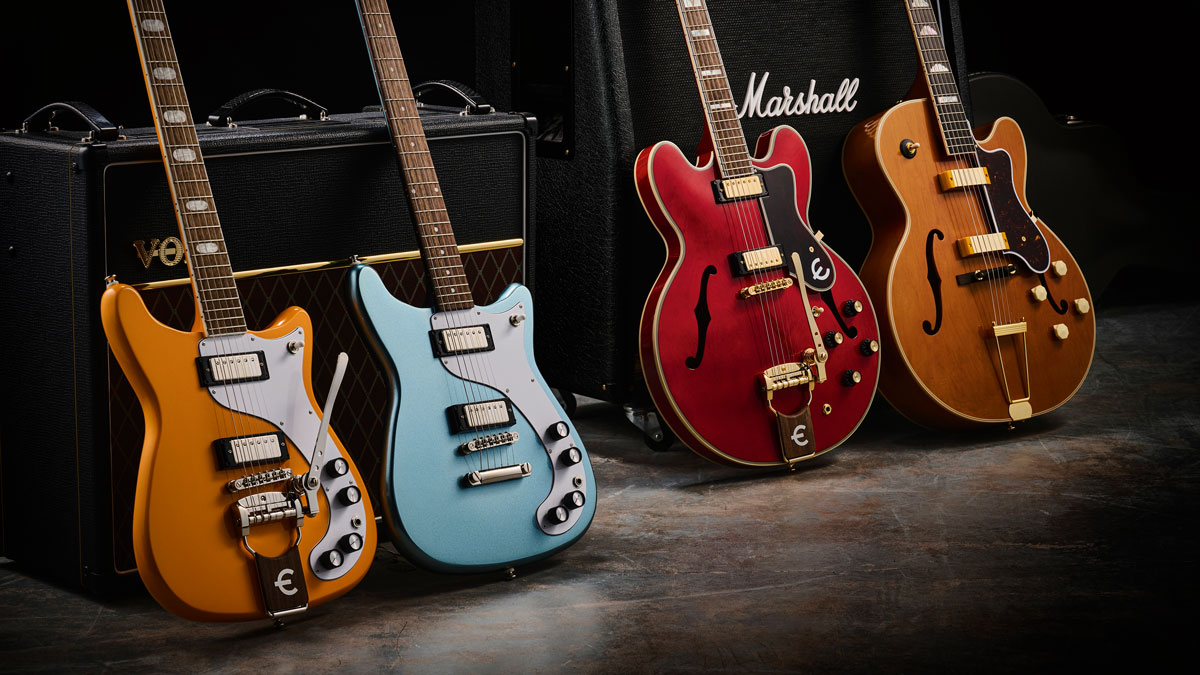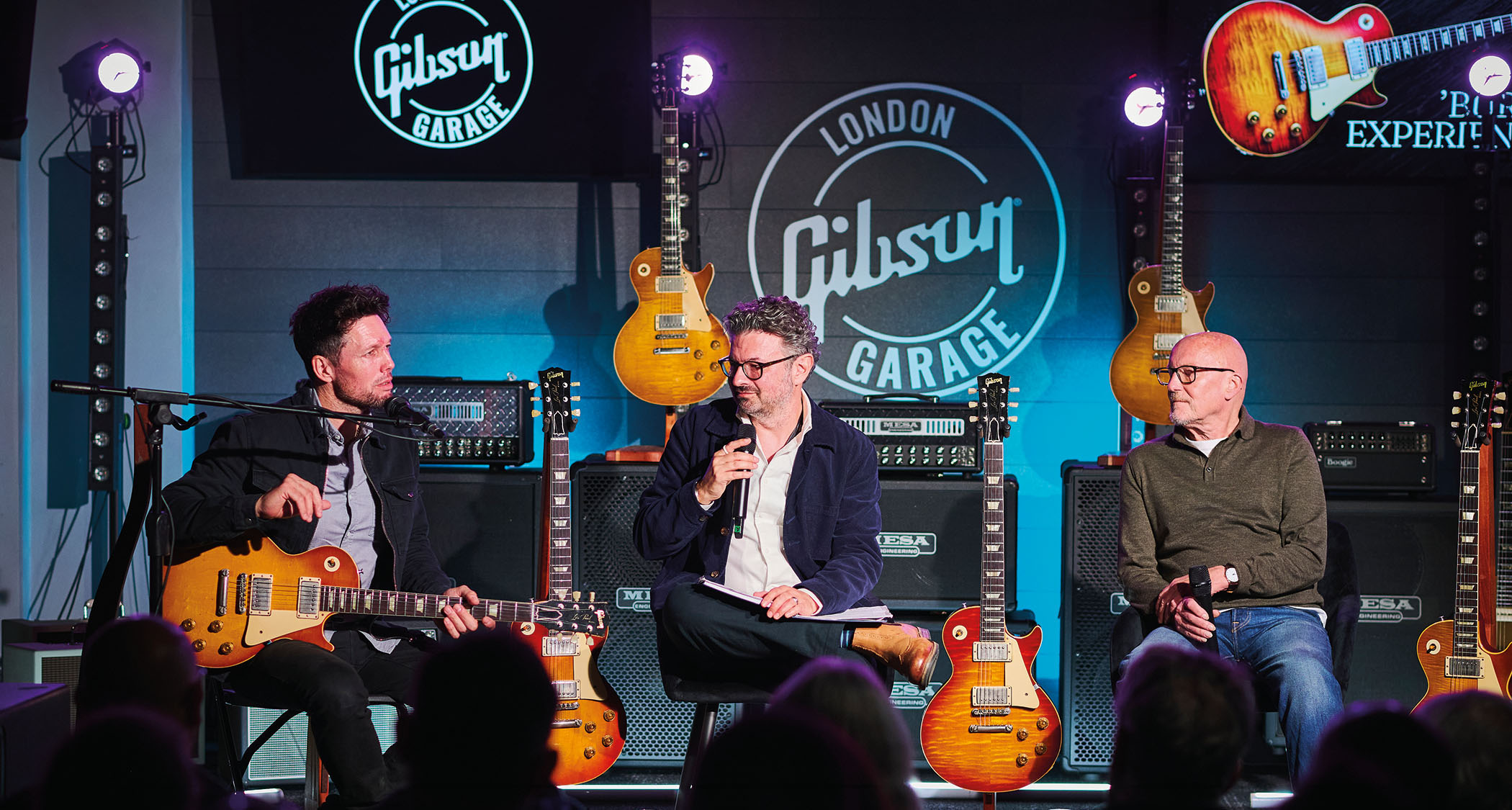Guitar World Verdict
The term ‘punching above their weight’ is somewhat overused, but it perfectly describes our Fab Four here. With impressive looks, tones and playability, these are classic original Epiphone designs that stand apart from Gibson’s own offerings.
Pros
- +
Lots of guitar for the money.
- +
Incredibly handsome guitars, and originals too.
- +
All offer superb value for money.
- +
Versatile.
Cons
- -
Sheraton and Crestwood Custom have dry fingerboards.
- -
Crestwood's wooden vibrato insert needs attention.
You can trust Guitar World
While the Stathopoulos musical-instrument-making dynasty took root in 1873, Epiphone didn’t evolve into a bona fide guitar manufacturer until 1928.
The four electric guitars you see here straddle what we might term the company’s ‘golden era’, from the ’40s to the ’60s. They also mark the change from an independent builder of primarily archtop jazz guitars, to a purveyor of thinline and solidbody blues, pop and rock machines now under the auspices of guitar giant Gibson. And while the Sheraton is clearly a member of that company’s fabled ES-300 family, the other three are purely Epiphone designs.
The Zephyr Deluxe Regent was an important product for Epiphone and – alongside models like its gigantic (470mm/18.5-inch) brother the Emperor Zephyr Regent, the Broadway and various Masterbilt models – was aimed directly at similar Gibson archtops at various size and price points.
The Indonesian-built 150th reissue faithfully celebrates the 1948 original, with its 444.5mm (17.5-inch) laminated maple body, five-piece mahogany and maple neck, ebony fingerboard with imposing mother-of-pearl ‘cloud’ inlays, all topped off by a large headstock with delightful ‘tree of life’ decoration, also in pearl.
Electronically, it’s a far more intuitive affair than that aforementioned sibling with its triple pickups and mind-blowing array of switches, simply featuring twin Epiphone New York mini-humbuckers, two volume controls, two tones (both CTS), and a three-way Switchcraft pickup selector and output jack.
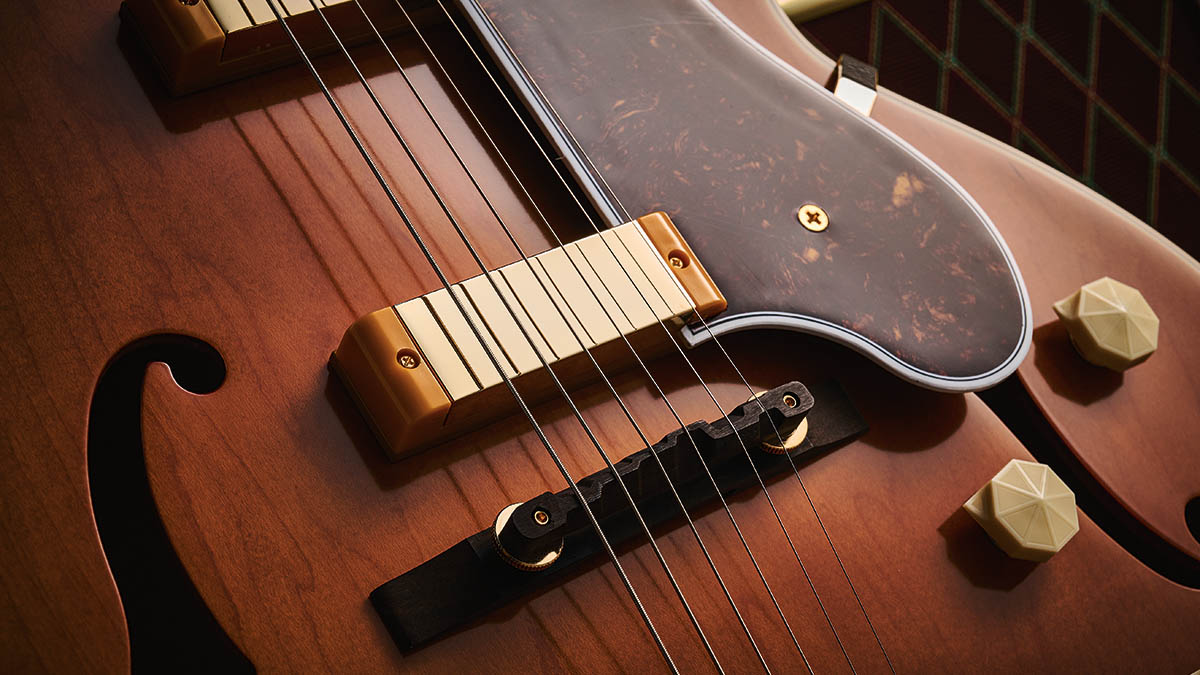
The faux Bakelite knobs bring a bit of Art Deco, their built-in ‘pointers’ showing where your controls are set. Those pickup surrounds, too, look like they’ve sat in jazz bars for hours soaking up cigar smoke to turn them a nicotine-stained dusky yellow.
Finished in lightly matted Aged Antique Natural and with a bound mock-tortoise pickguard, all gold-plated parts including a trapeze tailpiece and ‘Historic’ Epiphone tuners (the bridge is adjustable ebony, on an ebony ‘foot’), it adds up to a bold and impressive statement.
All the latest guitar news, interviews, lessons, reviews, deals and more, direct to your inbox!
The heel is a two-piece affair, but the excellent joinery pretty much obscures this. As is common on archtops, the sliver of mahogany that sits between the fingerboard’s final few frets and the body is separate, too.
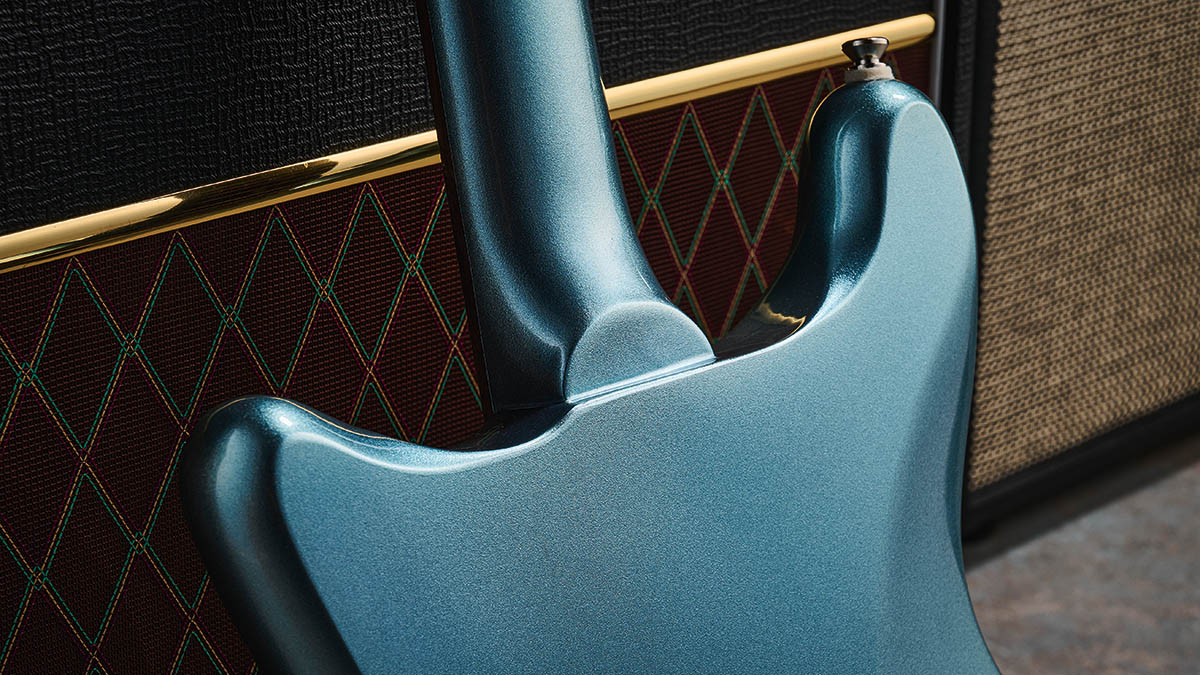
The Sheraton took shape alongside Gibson’s ES-300 series of 1958, and probably ranks somewhere between the ES-345 and even more blingy 355. It was definitely an upper-crust model and was favoured by blues giants Otis Rush and John Lee Hooker. It features gold-plated hardware, a pair of Gibson mini-humbuckers, LockTone tune-o-matic bridge, the Tremotone vibrato tailpiece with ‘E’ inlaid Indian laurel insert, and kidney-button Grover Rotomatic tuners.
It’s a fabulous-looking instrument, here in very authentic-looking Cherry and with multiple body and peghead binding, bound Indian laurel fingerboard, pearl and abalone ‘block and triangle’ fret markers, and that pearl tree-of-life headstock inlay taking pride of place. It certainly doesn’t hold back.
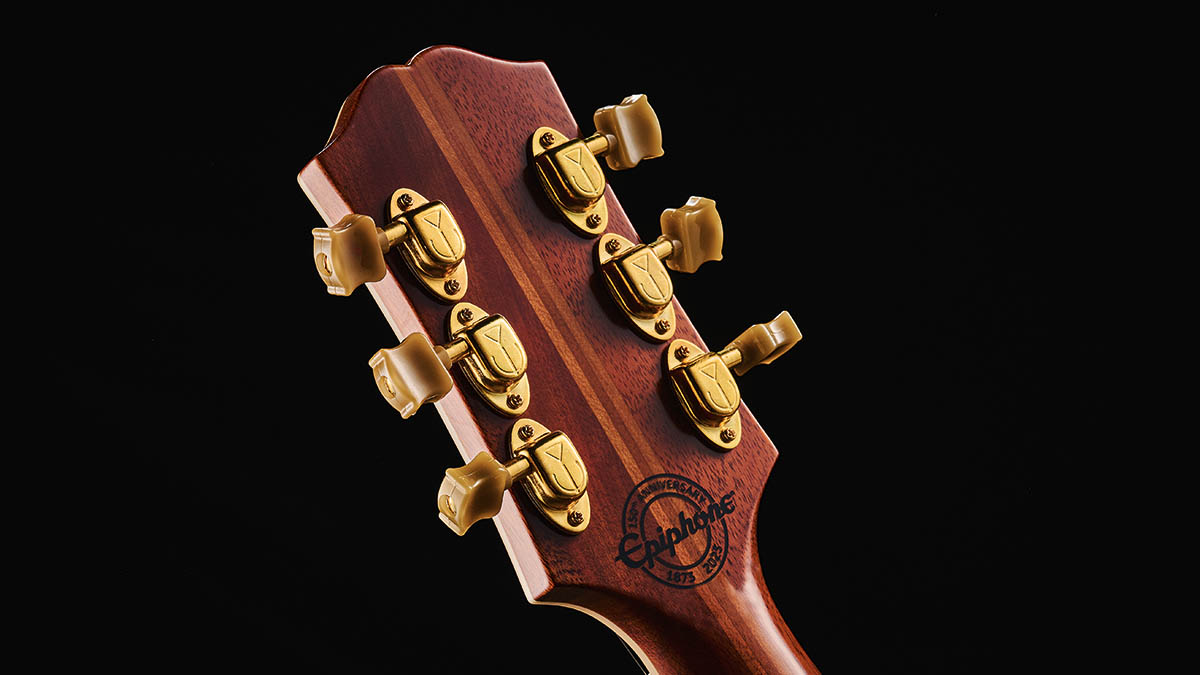
Next comes the legendary Crestwood Custom. The fancier-looking sister to the Coronet and Wilshire, it’s based on a body shape that first appeared in 1958. Here, too, we see the killer-looking ‘batwing’ headstock that was later usurped by the short Gibson-style version.
The mahogany body and set neck are finished in attractive California Coral, and with a white-black-white pickguard, all nickel-plated hardware, including Gibson mini-humbuckers, Wilkinson six-on-a-plate tuners, a LockTone bridge and Tremotone vibrato, it looks a peach.
The fingerboard is also Indian laurel, a timber that works exceptionally well as a rosewood replacement. Here, it’s inlaid with bold oval celluloid (not pearl) position markers, just as the originals, to round off another classic Epiphone design. The fingerboard and laurel vibrato insert could do with a drink of lemon oil, but otherwise it’s a fabulous-looking thing.
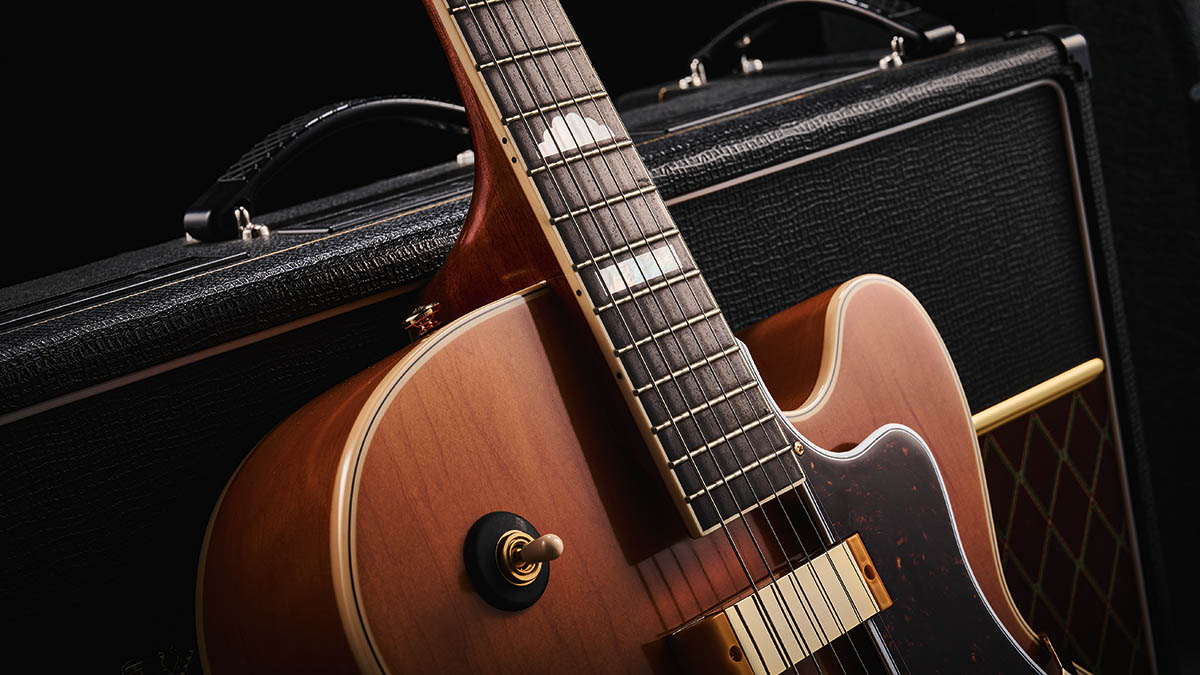
Although the cheapest of our quartet, the Wilshire is nonetheless a great-looking guitar. Here in Pacific Blue metallic with white-black-white pickguard and black batwing headstock with gold Epiphone logo, it makes a striking visual statement. While based on the same asymmetrical double-cutaway body shape, it’s a simpler beast than the Crestwood Custom, but many will prefer it for that.
From the headstock down it’s those Wilkinson six-on-a-plate tuners again, a dot-inlaid Indian laurel fingerboard (darker than that of the Crestwood), the ubiquitous Gibson mini-humbuckers, LockTone bridge and tailpiece, plus twin volume and tone controls laid out, as on the Crestwood, in a semi-circular bank with the neck pickup’s pots to the fore and the bridge’s sitting aft. Again, the body and set neck are mahogany.
So, four contrasting designs but each with much to commend it. Easy on the eye they may be, but let’s see how they fare under the fingers and to our critical ears.
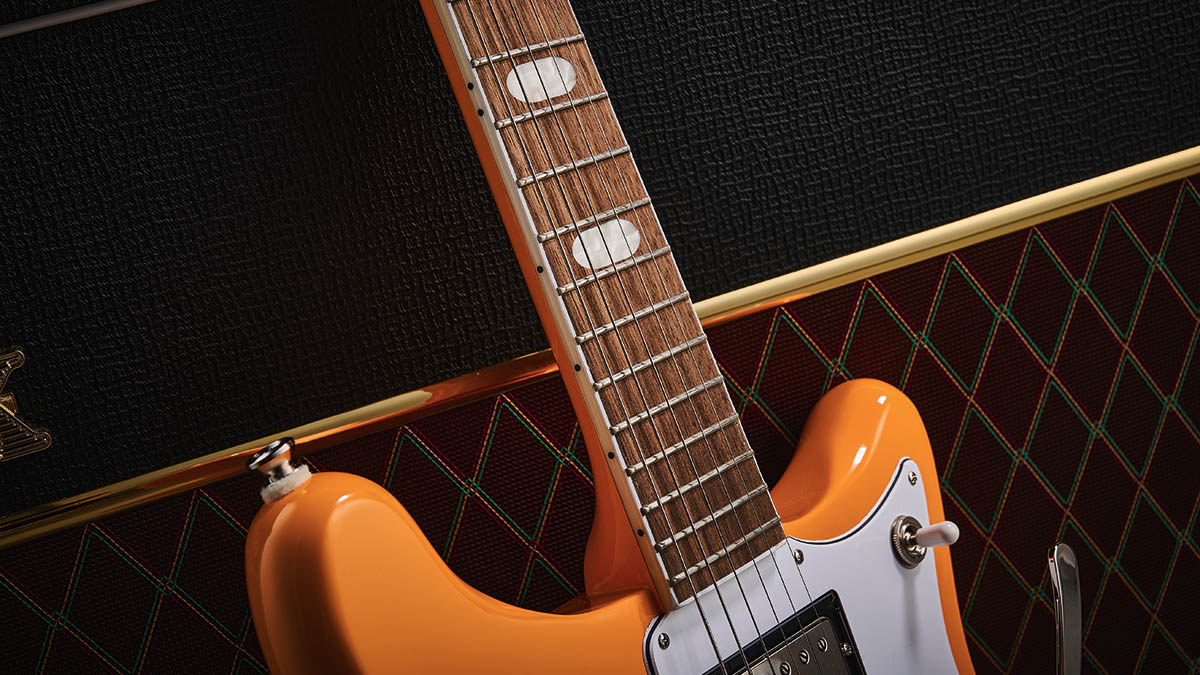
Feel & Sounds
Starting with the Zephyr Deluxe Regent, it’s obviously a big old beast that’s best played sitting down. With a reasonably low action on its medium C profile neck, 43mm nut width and a spacious 56mm at the bridge, it’s great for fingerstyle comping, chopped-out chords, flighty solos and pretty much anything else you can throw at it.
With its generous cutaway, the higher frets (there are 20) are pretty accessible, even though on guitars such as this, top-end forays are hardly de rigueur. And while, of course, it’s primarily a jazz box, it would sit really nicely in a jazz-blues combo doing Etta James or Nat King Cole numbers. The guitar oozes class, and looks and feels extremely authentic.
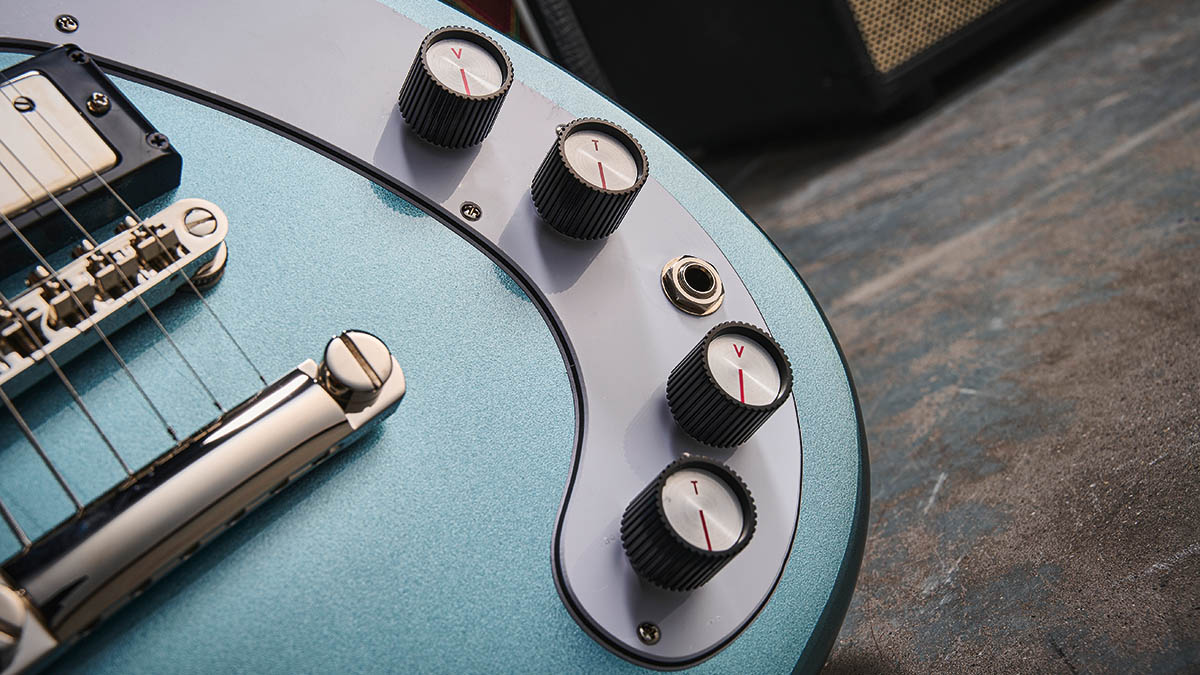
The Sheraton is a wholly different creature to play. It’s by far the heaviest of our foursome, clocking in at a Les Paul-worthy 3.85kg (8.5lbs). Its SlimTaper neck, too, feels wide and thin, even with its not overly spacious 43mm nut. The guitar’s action is a little low for this reviewer, but a tweak of the LockTone bridge’s thumbwheel will easily cure that.
Many players love a super-slinky action, though, so we’re not complaining. Top-fret access is always excellent on thinline semis, and the Sheraton is no different; you could bend the 22nd fret up to the octave should you desire. Fret laying and finishing are very well done, with nicely rounded ends and well polished for slinky bends and vibrato.
Speaking of which, the Sheraton’s Tremotone works smoothly in the hand, providing gentle wobbles to chords, or Duane Eddy-style dips. Not surprisingly, divebombs are out, but the guitar does return to pitch well, more so than on some other similar units.
Our two solidbody models are identical dimensionally, with what Epiphone calls ‘1960s SlimTaper D shape’ necks that join the asymmetrical bodies at the last of their 22 medium-profile frets.
Access therefore is total, and on a strap the guitars balance superbly, their small, lightweight bodies tucking in really well for a virtually effortless playing experience. Of course, one major difference is the Crestwood Custom’s Tremotone vibrato, which works just like that of the Sheraton for musical wobbles and vocal-like ends to your notes.
One thing worth noting with both guitars is their control layout. There’s a volume and tone knob for each pickup, separated by the input jack, with the three-way selector mounted on the short lower horn. While not as ideal as, say, a Strat or Les Paul, this quirkiness takes only minutes before it feels quite natural (use an angled jack, though!).
Since all four guitars feature mini-humbuckers – Gibson in the solidbody and thinline guitars, and Epiphone’s own New York models in the jazzer – we were hoping for a set of less obvious voices from our quartet. Luckily, each one stepped up to the plate to deliver the goods.
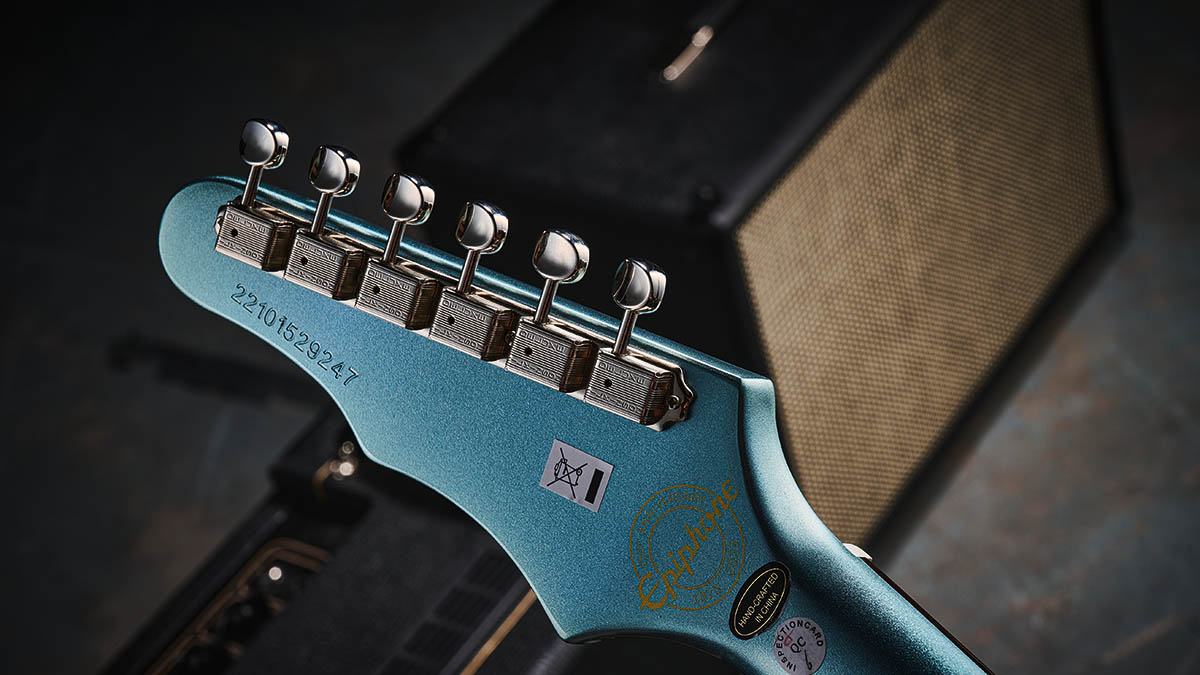
While the Wilshire and Crestwood Custom have much in common, the vibrato tailpiece on the latter guitar gives it a slightly less strident sound. The Wilshire is gutsy and bright but with a hefty middle thump, especially if you knock the tone control back a couple of notches.
It loves that point where the amp suddenly wants to take it to the next level, with medium power amp drive but not much front-end gain. It’s a ‘sweet spot’ kind of thing. The Crestwood is much the same but perhaps a little more scooped and open in the middle.
All three pickup selections are distinctive and usable, to the extent that if you forgot your Tele they’d do the job, if you mislaid your SG no problem, and even if you left your Gretsch at home, either of these would cope. But they do have their own voice, and you need to hear it to understand it – but think of Johnny Winter on his Firebird and that’s not a bad ballpark.
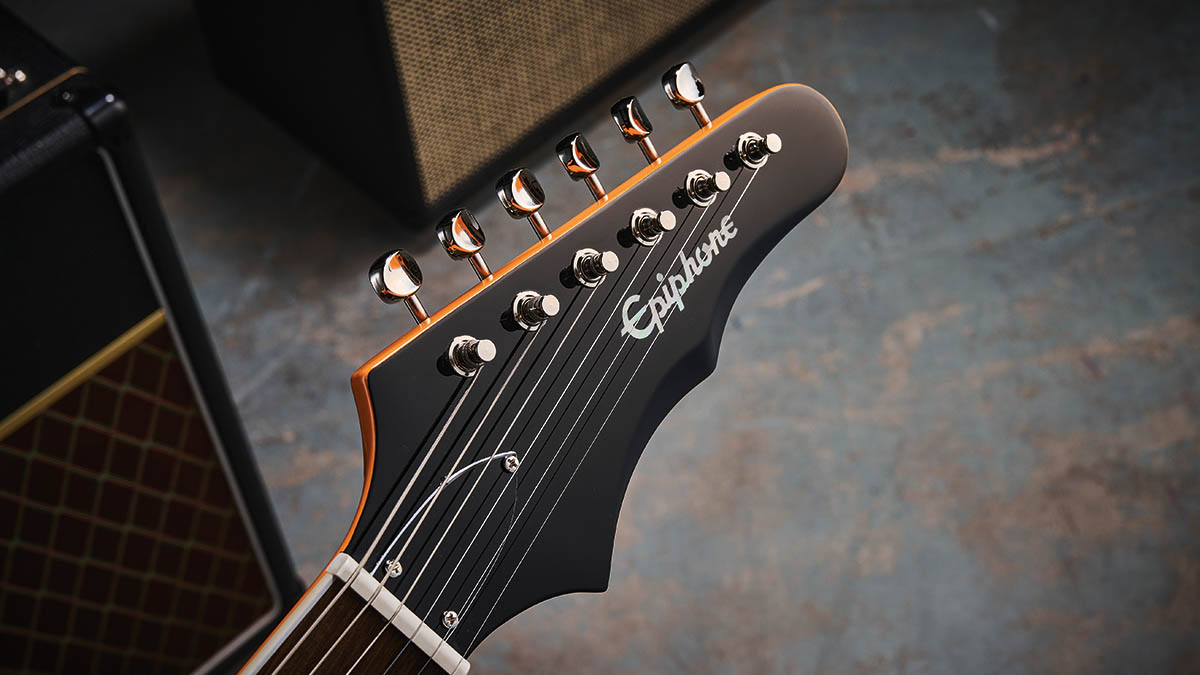
With the same pickups fitted to the Sheraton, the family dialect is, of course, still there. But it’s a beefy beast, very punchy and tough sounding, so your Otis Rush licks will stand out a treat. Set to the neck pickup and with a dollop of drive, this is the only guitar here that exhibited any ‘Strat-iness’, that well-worn ‘flutey’ adjective describing it perfectly.
Set to the bridge, it kicks like a mule with the drive on but tames beautifully with the gain down and a little reverb added. Both pickups on is always a great sound on a thinline, but with these mini-humbuckers and that little bit of extra ‘sprang’ that this type of vibrato system seems to provide, it becomes very funky – think Motown’s Funk Brothers, Cornell Dupree with Aretha, that kind of thing. It’s a hugely versatile guitar that could quite possibly top a 335 in that regard.

We left the Zephyr Deluxe Regent until last because it’s unique within this company. Acoustically, it speaks with authority, its wooden bridge instantly adding the nuttiness you want in a guitar like this. It’s quite loud, too, not held in like some f-hole archtops can be, especially laminated ones.
Plugged into our small Marshall combo, that acoustic sound translates to the amplified tone, again the wooden bridge offering no hint of sharpness or ‘quack’. And while clean neck pickup chords and licks sound sweet, especially with some tone backed off, the guitar does love to push itself into that blues-jazz area in which Kenny Burrell excelled – clean but with a slight edge.
Though this style of instrument is rarely heard on the bridge pickup, it’s actually great for arpeggio picking, and if you want to go a bit ‘country gent’, switch both pickups on for those Chet or Eddie Cochran moments. This is a much more versatile instrument than you might be forgiven for thinking it would be.
Verdict
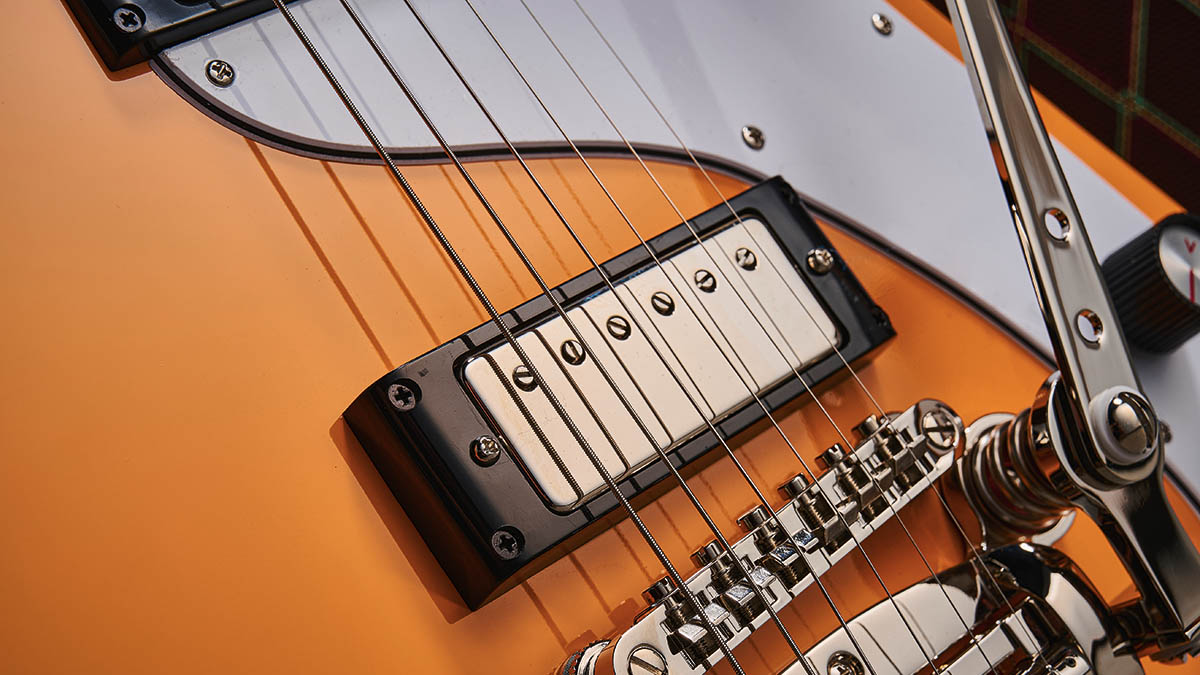
So, four 150th anniversary guitars and each one well worthy of its place in the Epiphone line-up. With top-quality electrics and hardware, including Gibson pickups on three of the four, Wilkinson tuners and CTS pots, all mated to well-built and keenly priced instruments, there’s so much to like.
They all come in very attractive 150th Anniversary Historic cases, too, plush lined and with the Epiphone logo emblazoned on the outside. What’s more, these are original Epiphone designs, not Epi recreations of Les Pauls, SGs or ES-335s, so there should be no stigma about choosing any of these as a playing companion.
The Zephyr Deluxe Regent looks brilliantly authentic, sounds and plays great and is many thousands of pounds less than a vintage model would be. Its cherry red thinline cousin is a different prospect; it’s powerful and pokey, looks stunning in its posh livery, and with that mini-humbucker powertrain and very workable vibrato system is as versatile as a guitar like this can be.
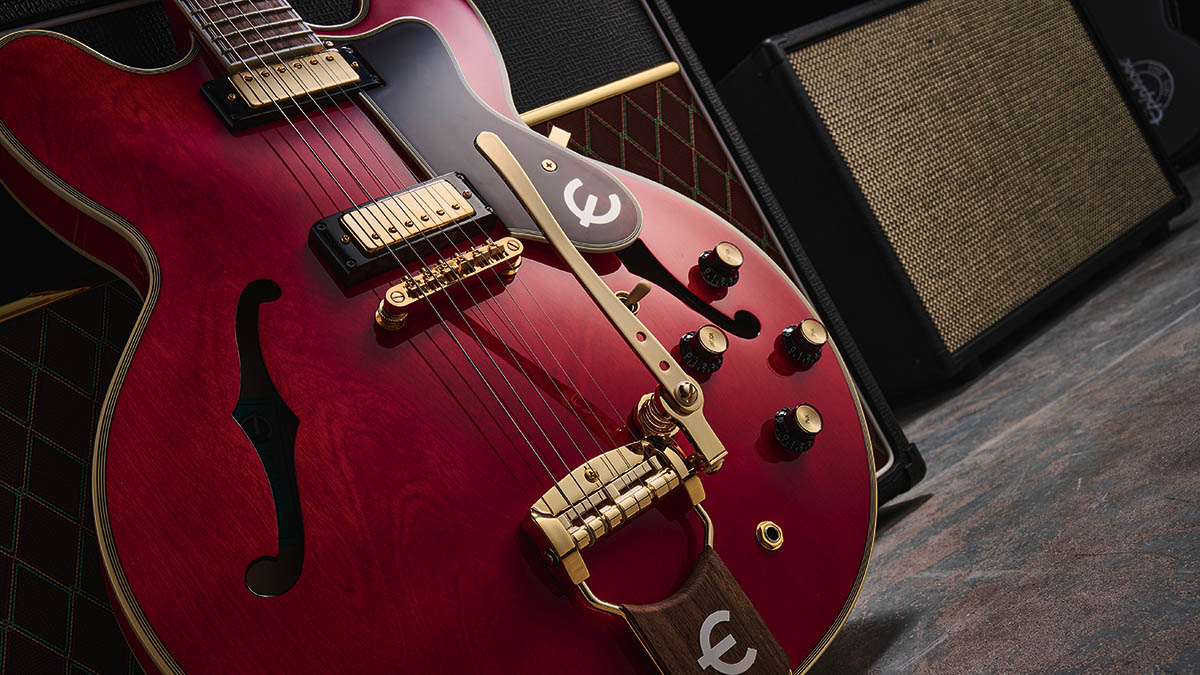
Our two solidbody guitars, the Wilshire and the slightly more upper-crust Crestwood Custom, have way more showroom presence than their relatively meagre price tags might suggest. They look special, play superbly, sound stonking and, even with the Crestwood’s slightly dry fingerboard and vibrato inlay, we can’t praise them highly enough.
Specs
Epiphone 150th Anniversary Zephyr Deluxe Regent
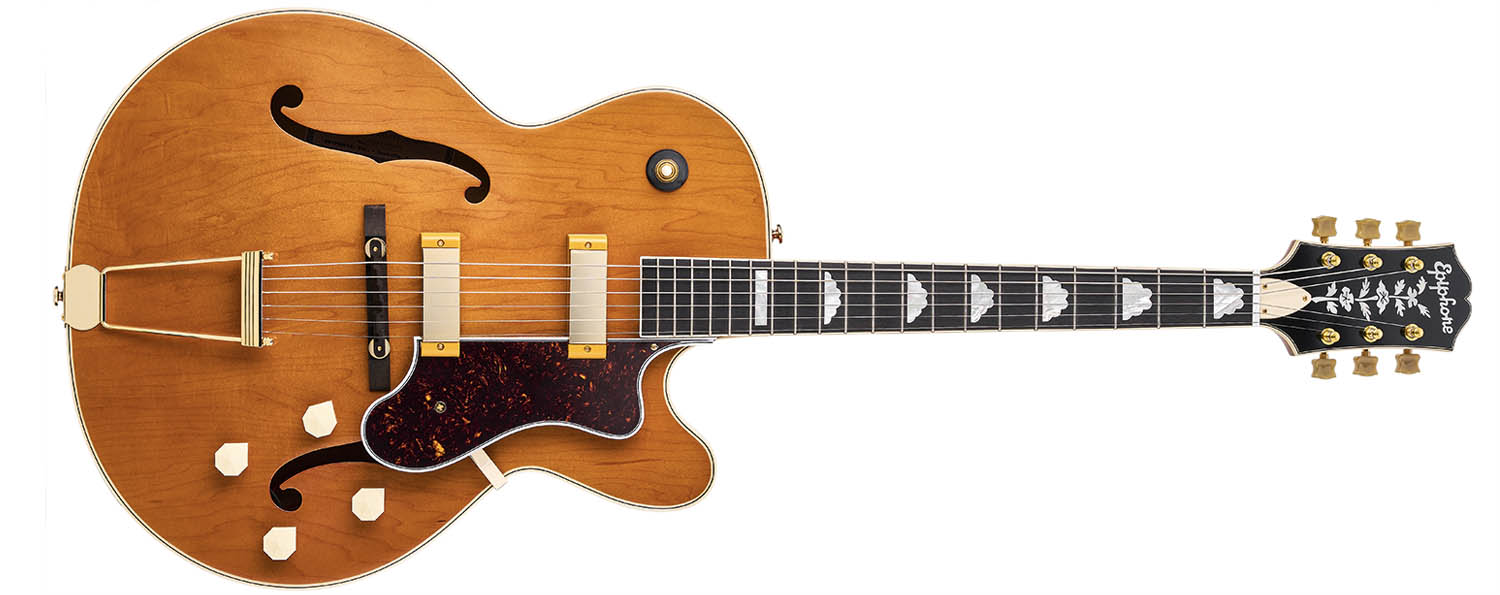
- PRICE: $1,299/£1,429 (inc hard case)
- ORIGIN: Indonesia
- TYPE: Single-cutaway archtop hollowbody
- BODY: Pressed laminated maple
- NECK: 5-piece mahogany and maple laminate, bound headstock with tree‑of-life headstock inlay in mother‑of-pearl
- SCALE LENGTH: 648mm (25.5”)
- NUT/WIDTH: Graph Tech/43mm
- FINGERBOARD: Bound ebony with mother-of-pearl cloud inlays, 305mm (12”) radius
- FRETS: 20, medium-fine
- HARDWARE: Gold-plated trapeze tailpiece, ebony jazz-style bridge and ‘foot’, bound floating pickguard, Epiphone Historic tuners
- STRING SPACING, BRIDGE: 56mm
- ELECTRICS: Epiphone New York mini-humbuckers, 2x volumes, 2x tones with CTS pots, 3-way Switchcraft pickup selector and output jack
- WEIGHT (kg/lb): 2.72/6
- OPTIONS: N/A
- RANGE OPTIONS: N/A
- LEFT-HANDERS: No
- FINISH: Aged Antique Natural
Epiphone 150th Anniversary Sheraton
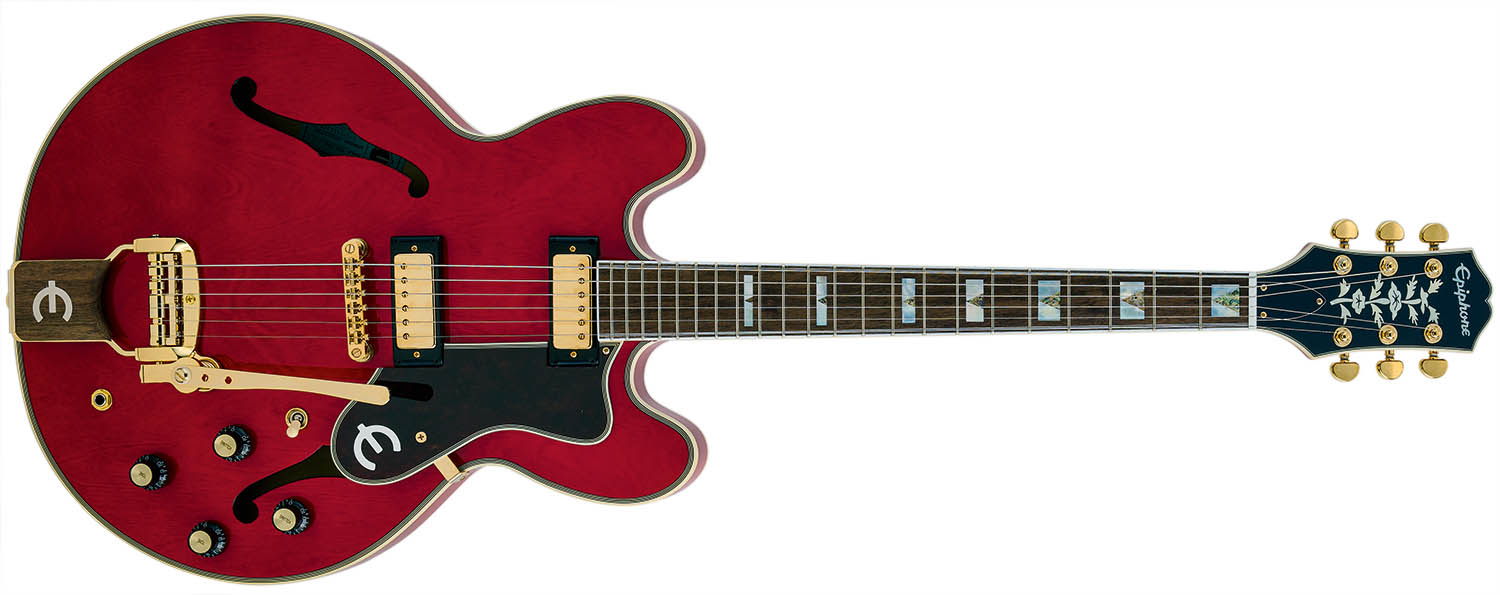
- PRICE: $1,299/£1,429 (inc hard case)
- ORIGIN: China
- TYPE: Double-cutaway semi-solid thinline electric
- BODY: Pressed laminated maple
- NECK: 1-piece, SlimTaper mahogany
- SCALE LENGTH: 629mm (24.75”)
- NUT/WIDTH: Graph Tech/43mm
- FINGERBOARD: Bound Indian laurel with pearl and abalone block inlays, 305mm (12”) radius
- FRETS: 22, medium
- HARDWARE: Gold-plated LockTone tune-o-matic bridge and Tremotone vibrato bridge with laurel inlay and ‘E’ logo; Grover Rotomatic tuners
- STRING SPACING, BRIDGE: 51.5mm
- ELECTRICS: 2x Gibson mini-humbuckers, 2x volumes, 2x tones (with CTS pots), Switchcraft 3-way selector and output jack
- WEIGHT (kg/lb): 3.85/8.5
- OPTIONS: N/A
- RANGE OPTIONS: N/A
- LEFT-HANDERS: No
- FINISH: Cherry
Epiphone 150th Anniversary Crestwood Custom
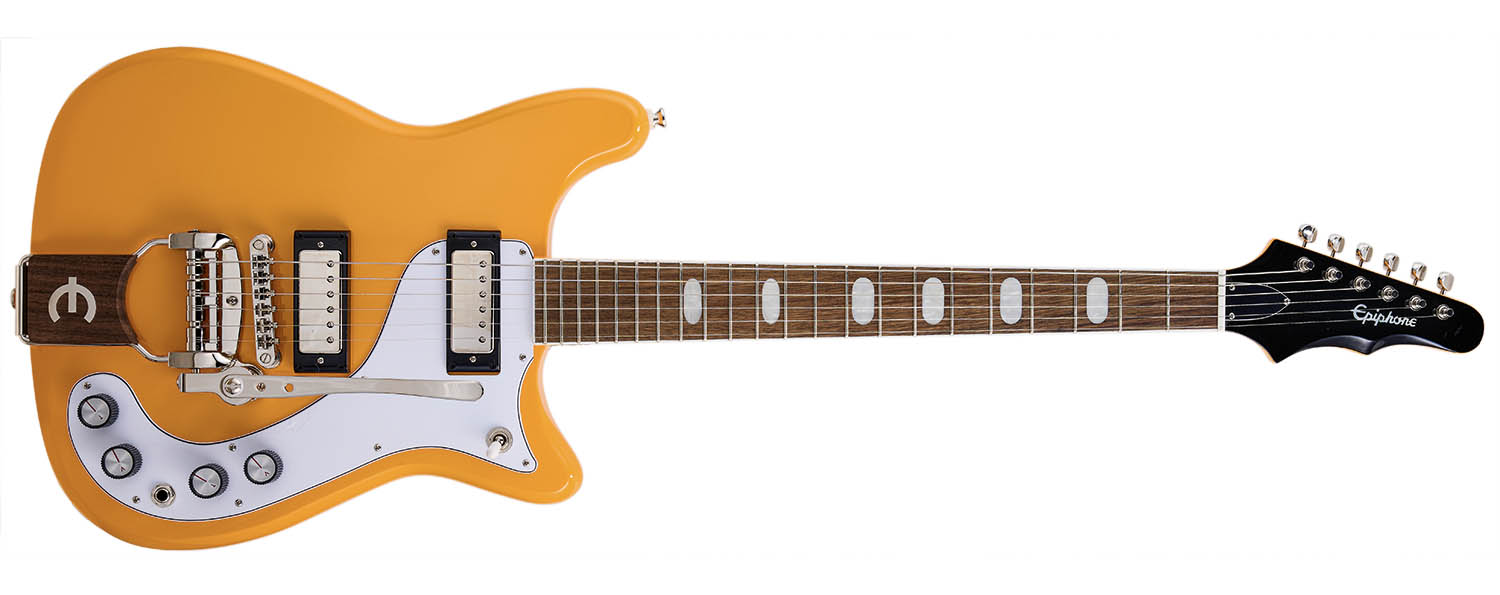
- PRICE: $999/£1,049 (inc hard case)
- ORIGIN: China
- TYPE: Double-cutaway solidbody electric
- BODY: Mahogany
- NECK: 1-piece mahogany
- SCALE LENGTH: 629mm (24.75”)
- NUT/WIDTH: Graph Tech/43mm
- FINGERBOARD: Bound Indian laurel 304mm (12”) radius
- FRETS: 22, medium jumbo
- HARDWARE: Nickel-plated
LockTone bridge and Tremotone vibrato, Wilkinson 6-a-side vintage-style tuners - STRING SPACING, BRIDGE: 51.5mm
- ELECTRICS: 2x Gibson mini-humbuckers, 2x volumes, 2x tones (with CTS pots), Switchcraft 3-way selector and output jack
- WEIGHT (kg/lb): 2.58/5.7
- OPTIONS: N/A
- RANGE OPTIONS: N/A
- LEFT-HANDERS: No
- FINISH: California Coral
Epiphone 150th Anniversary Wilshire

- PRICE: $/£899 (inc hard case)
- ORIGIN: China
- TYPE: Double-cutaway solidbody electric
- BODY: Mahogany
- NECK: 1-piece mahogany
- SCALE LENGTH: 629mm (24.75”)
- NUT/WIDTH: Graph Tech/43mm
- FINGERBOARD: Indian laurel 304mm (12”) radius
- FRETS: 22, medium jumbo
- HARDWARE: Nickel-plated LockTone bridge and stud tailpiece, Wilkinson 6-a-side vintage-style tuners
- STRING SPACING, BRIDGE: 51.5mm
- ELECTRICS: 2x Gibson mini-humbuckers, 2x volumes, 2x tones (with CTS pots), Switchcraft 3-way selector and output jack
- WEIGHT (kg/lb): 2.49/5.5
- OPTIONS: N/A
- RANGE OPTIONS: N/A
- LEFT-HANDERS: No
- FINISH: Pacific Blue
- CONTACT: Epiphone
In the late '70s and early '80s Neville worked for Selmer/Norlin as one of Gibson's UK guitar repairers, before joining CBS/Fender in the same role. He then moved to the fledgling Guitarist magazine as staff writer, rising to editor in 1986. He remained editor for 14 years before launching and editing Guitar Techniques magazine. Although now semi-retired he still works for both magazines. Neville has been a member of Marty Wilde's 'Wildcats' since 1983, and recorded his own album, The Blues Headlines, in 2019.
